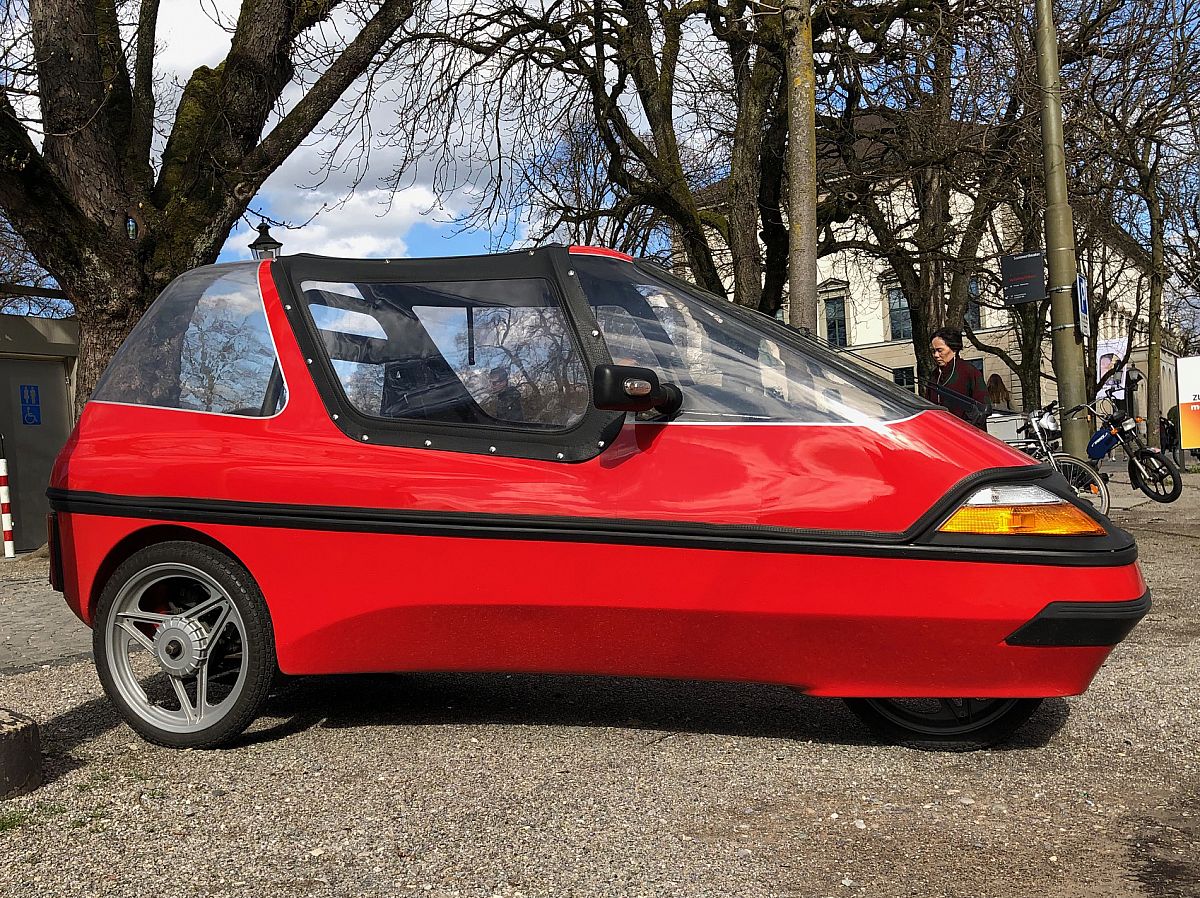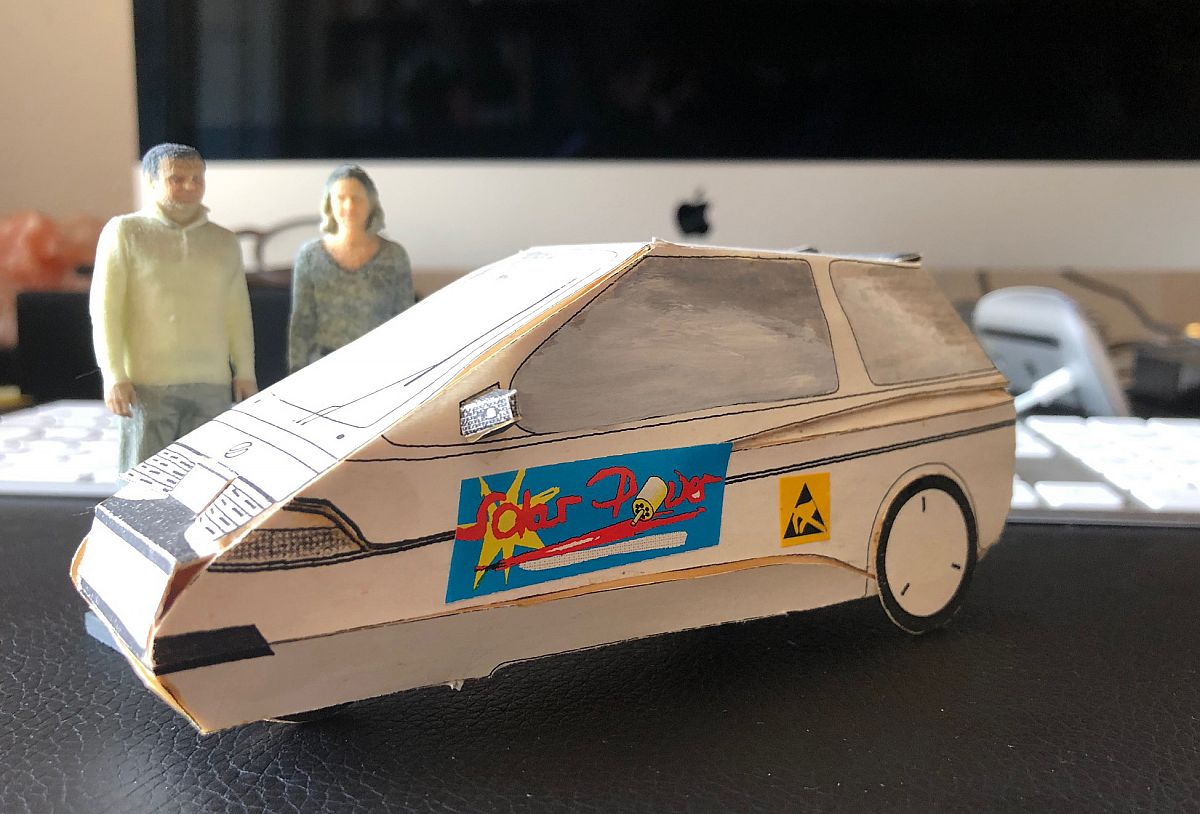Cheetah is running! what now?

I have to go to the tax office
Autumn 92 to spring 93: Cheetah was now running really well and reliably. How should I develop my company further? What should I do to earn money? Some races were still advertised and with the prize money and the prospect of being able to extend the sponsorship contract next season, I started the winter season. But first I was called by the tax office. The auditor had noticed that I wrote down in my tax bill that I had taken in less money than I had spent. He could not understand this. I confirmed to him that my statement had been made to the best of my knowledge and belief and that I was happy to show him that. We made an appointment. Without further ado, I drove to the appointment with my Cheetah and two paper bags full of receipts. I showed him my vehicle, explained about my races and also put the two paper bags with the receipts on the table. I assured him that everything I had collected in terms of income and expenditure was in there and that we could check it together. He was interested in my vehicle, but not so much in all the receipts and certainly not in going through them with me.
However, he explained to me that someone from the AHV would have to check me and my actions. They would also have to check whether I fulfilled the requirements for running a company with my engineering office or whether it was just a hobby.
My activity "only" a hobby? I was shocked. He explained to me that according to the information I gave, I was spending more money than I was earning and that I also only had one activity: I had built a vehicle and that was all. This is commonly called a hobby and not a profession - certainly not a self-employed activity. So I had to prove to the AHV examiner who was coming that I had a company and was doing a proper job. But how? I also had no idea how to set up proper bookkeeping and I had to learn how to earn money in a proper way. I could not count on the sponsorship money and the prize money. What should I do? Go back to being an employee? My desire was still to develop electric vehicles. Although I had already come a long way with the construction of Cheetah, my self-employment seemed far off. A project was needed. But it was impossible to develop another vehicle before the aforementioned AHV examination.
A model building sheet: The cornerstone of my company
I developed a craft sheet with which an electric scooter could be built. I chose the City-El from the company El-Trans. At the time, City-El was the most popular electric trolley that could be bought in Switzerland. Three wheels, 45km/h fast, with a roof, ideal for bringing your shopping home in the dry. The initiator, Steen v. Jensen, whom I had the pleasure of meeting later, wanted to mass-produce an energy-efficient, low-cost vehicle. He wanted to create something in between a bicycle and a car, ideal as a second car to take children to school or to do the shopping. It was supposed to cost CHF 6,000 in Denmark at the time. Due to production difficulties and also defects, the sales expectations could not be met and the company went bankrupt. Steen v. Jensen acted as a consultant for me in a later phase. I learned a lot from him.
Now, however, I designed a tinker sheet. In addition, I sold a drive set consisting of an electric motor, 3 wooden wheels with rubber tyres, cogwheels, axles, a small solar cell: this way, the paper craft sheet could be made mobile and when the sun shone, the little paper city el drove merrily in circles.
I had 100 of these handicraft sheets printed and bought material for 50 drive sets. I told the AHV representative who visited me in Seuzach about my racing activities and showed him the finished handicraft sheets that I wanted to sell. He accepted me as self-employed. I could continue with my projects.
Through the craft sheet, I learned to buy materials and sell finished craft sheets. I placed advertisements and tried to boost sales through toy shops, but the margin they demanded melted my cost recovery contribution. I learned to deal with numbers. Only I never made any money with it.

The development of an e-scooter
There was still the question of how I could earn money. I started to develop a scooter that was powered by an electric motor. I wanted to build the hull out of GRP, with Ni-CD batteries inside. The whole thing should be so light that it could easily be taken along and could be used to get from the parked car to the shopping shop in the city and back again. I built a first functional model and counted up all the material I used for it. Counting the labour, I came up with a minimum selling price of 2'000.- to 2'500.- This was an amount I thought was far too high. Who would buy such a driven scooter for that proud amount?
In Berlin I met some people who were also working on the development of a scooter. They chose the other approach and tried to make the scooter as cheap as possible with some steel and the simplest components. We teamed up. I got a scooter from them and optimised the drive. The selling price was well below CHF 1000. The Berliners were very good at designing brochures. Nevertheless, nobody wanted to buy these vehicles. The time was simply not ripe for it.
What I learned was:
- If you want to achieve great things, start with a small project.
- Earning money can be quite difficult.
- If an idea is too early, it may be good. It is not usable.
